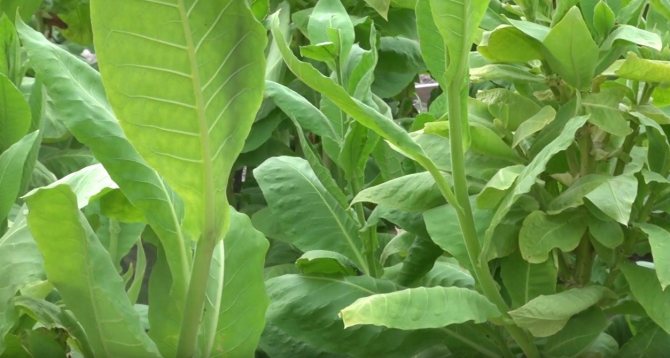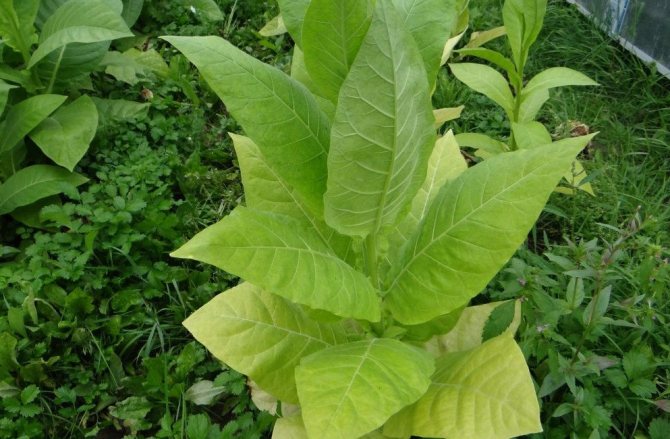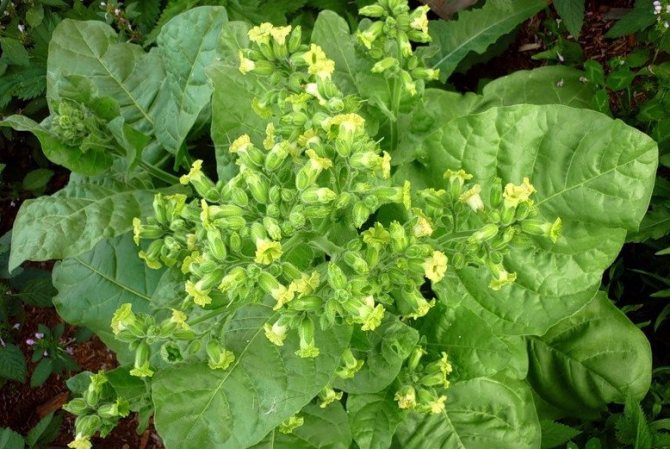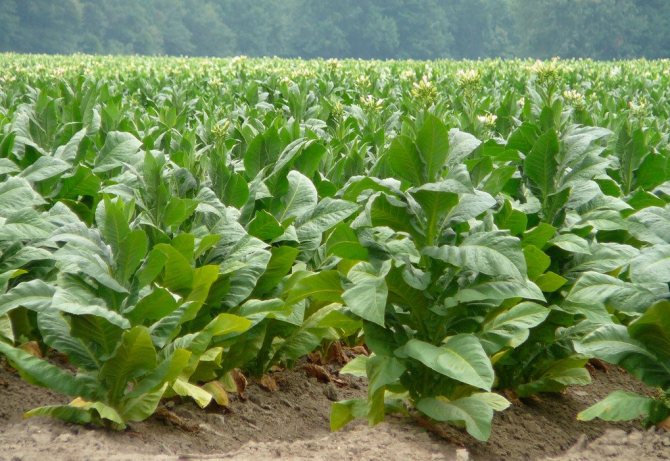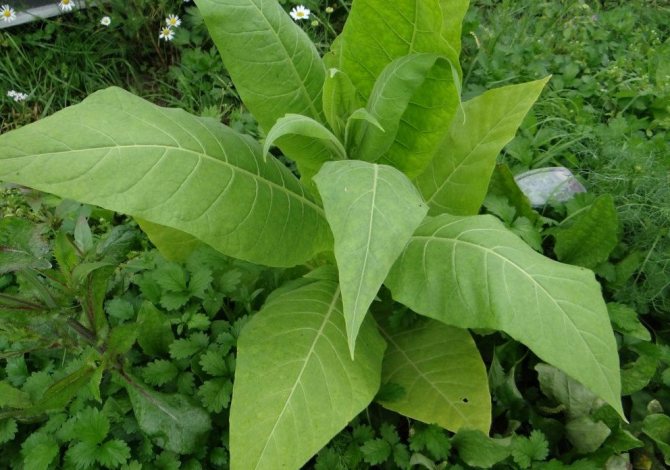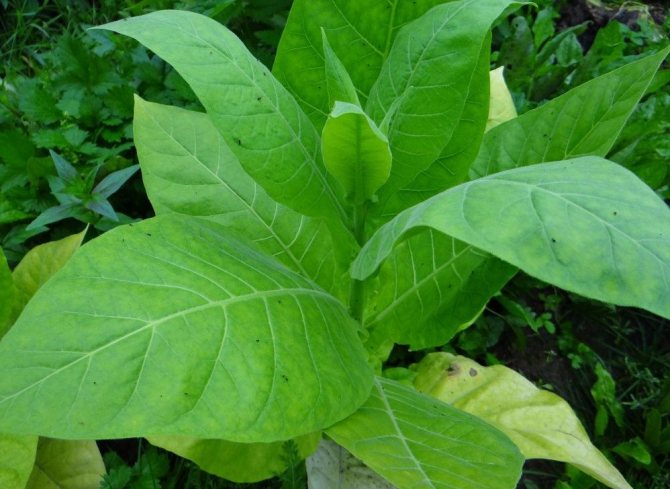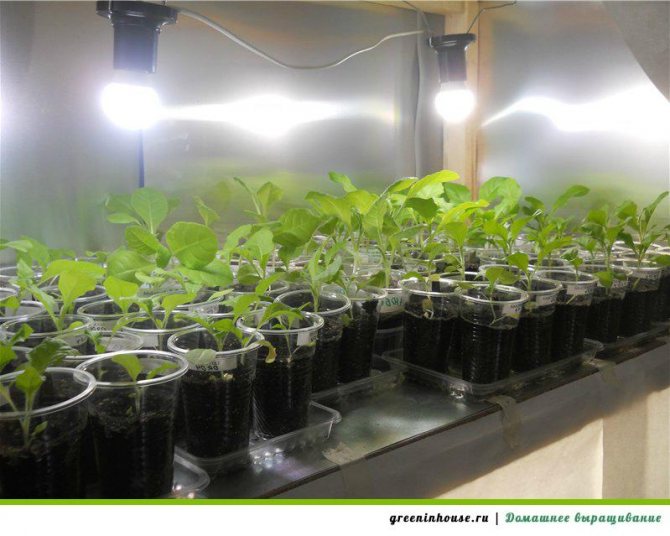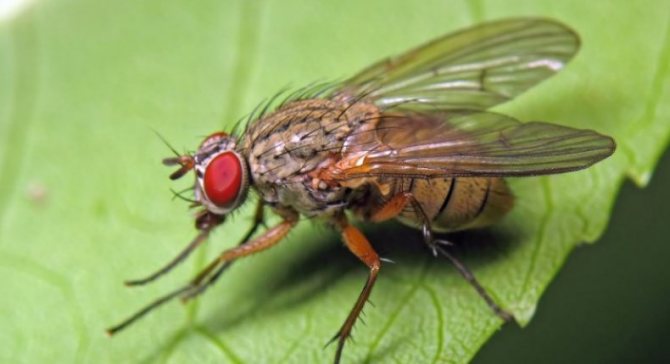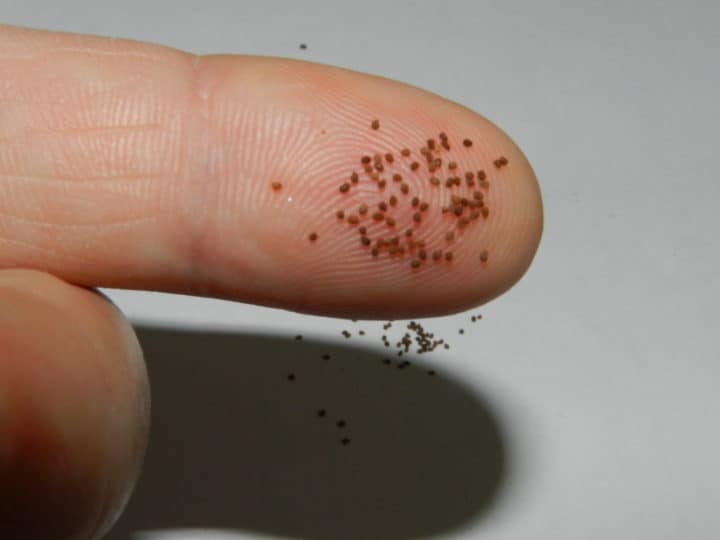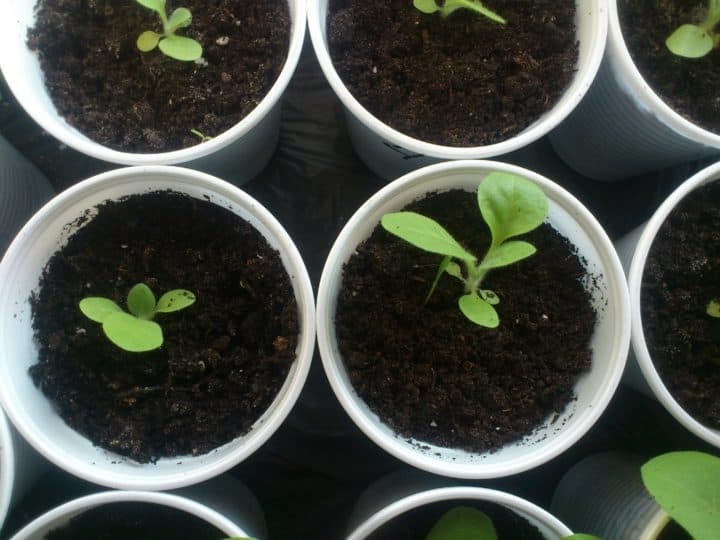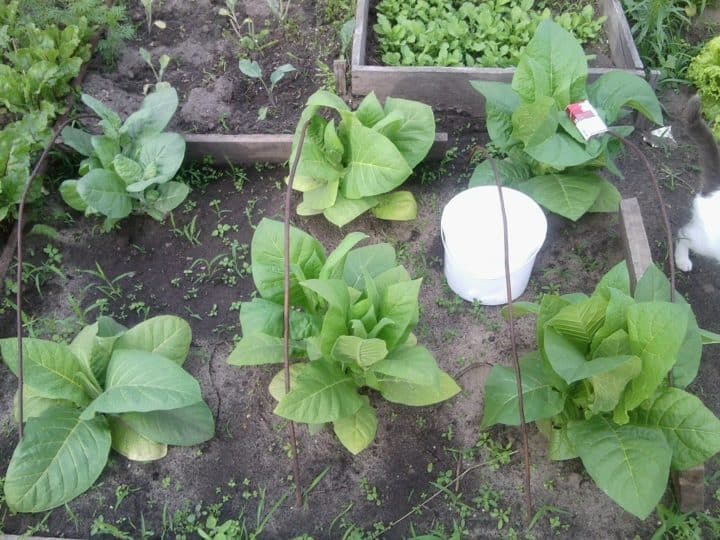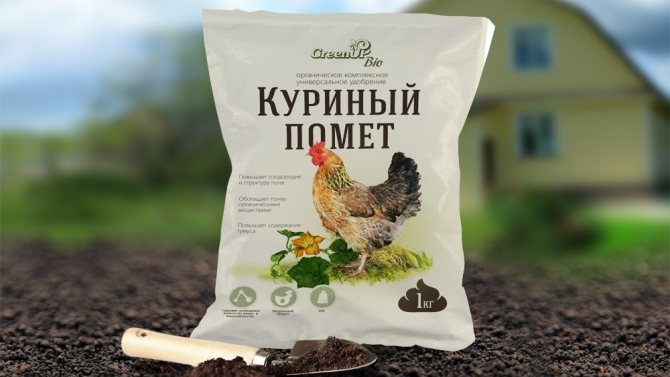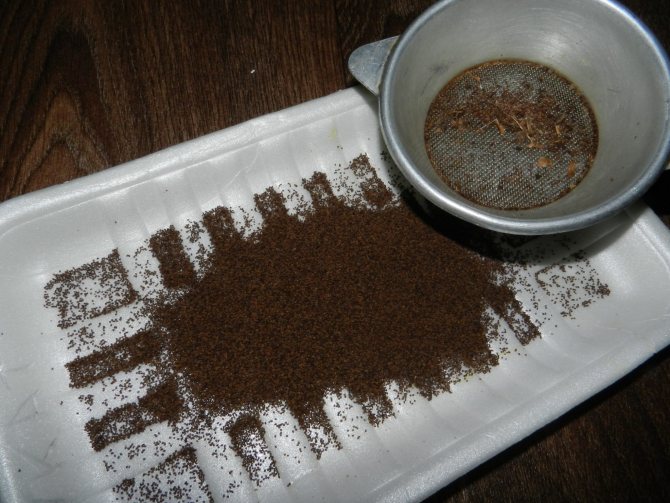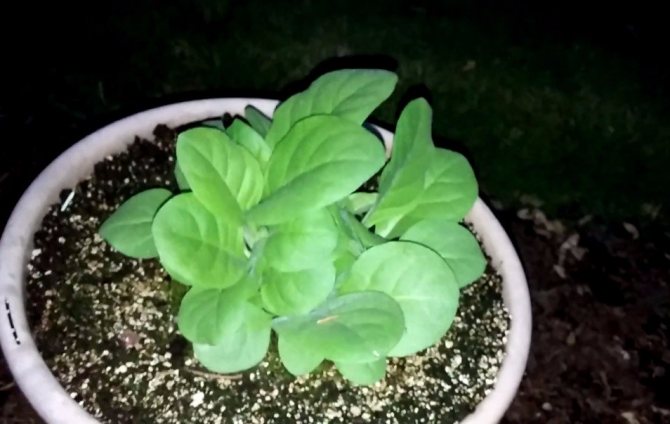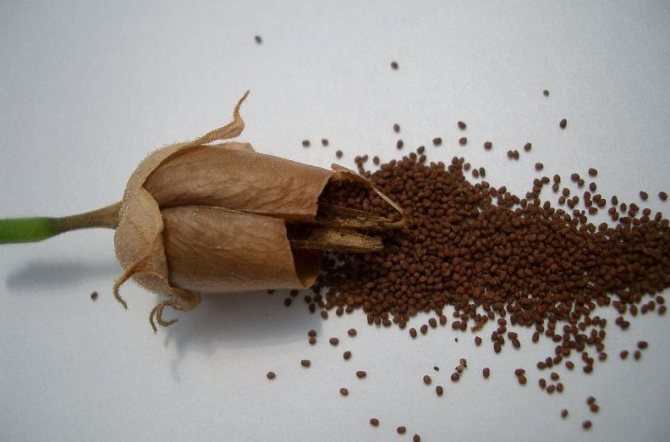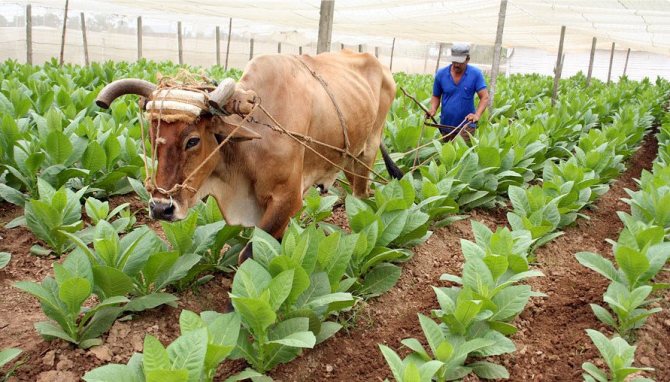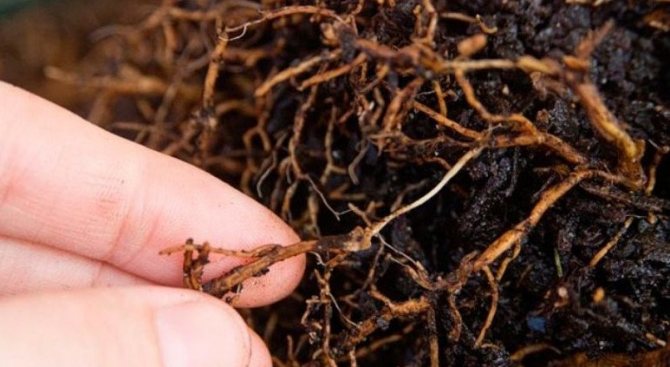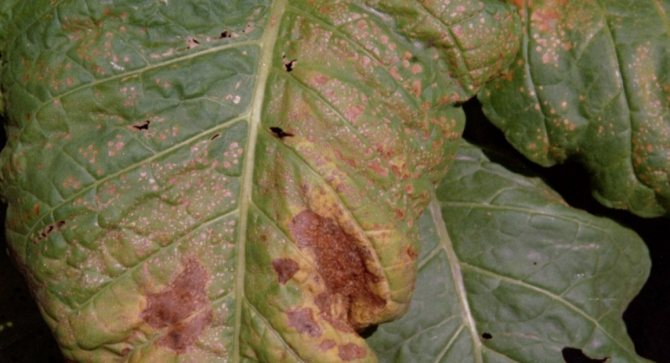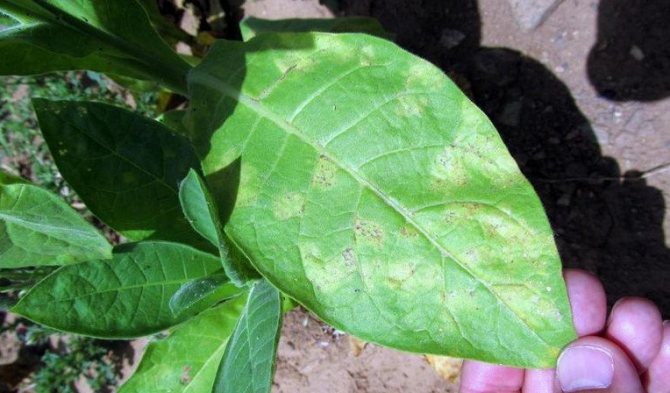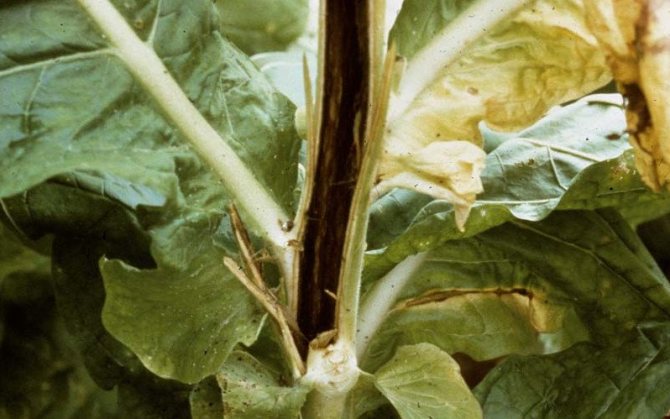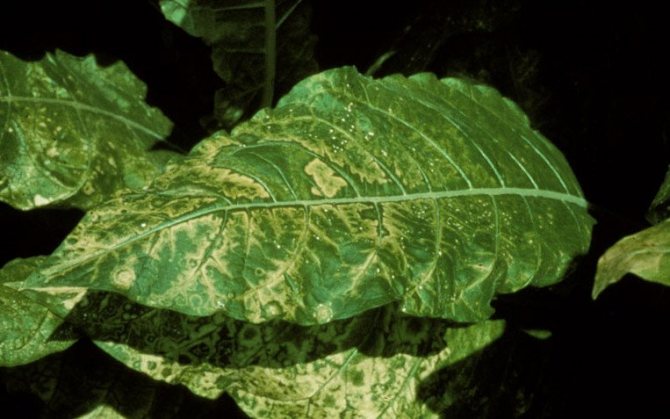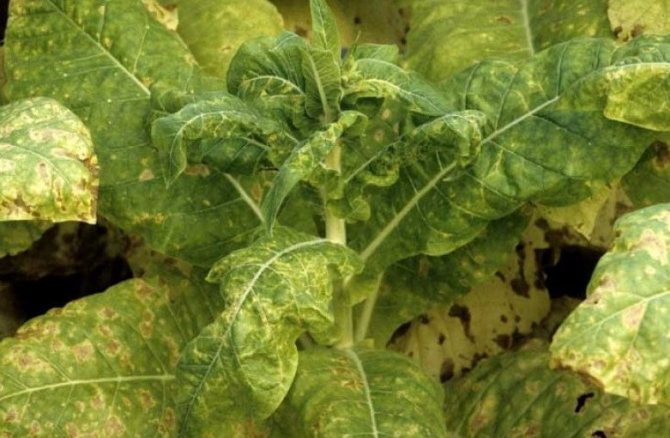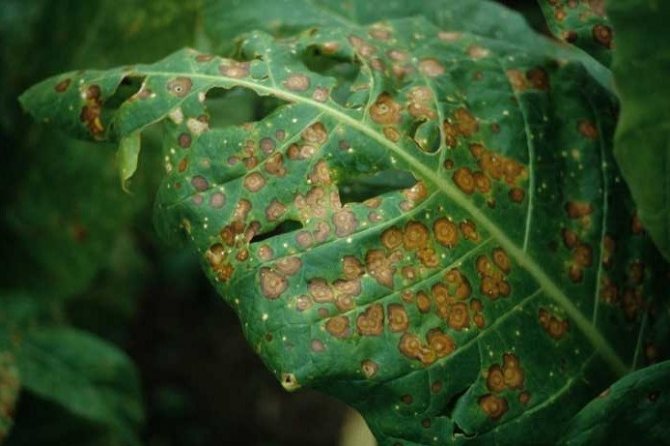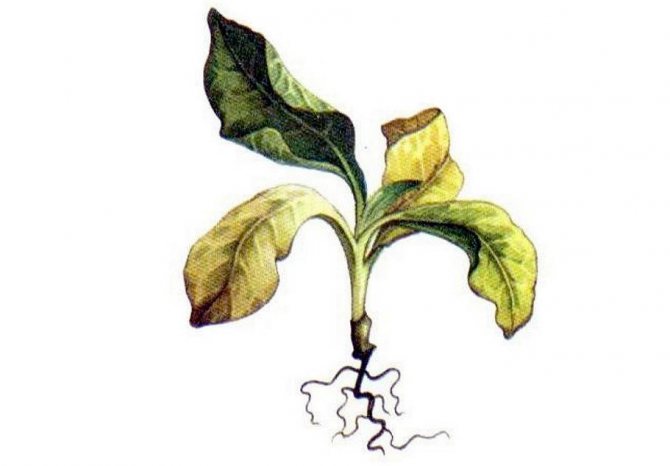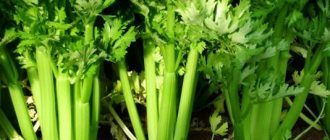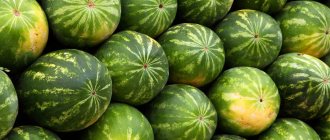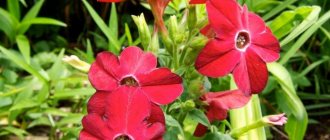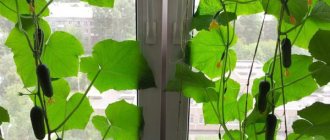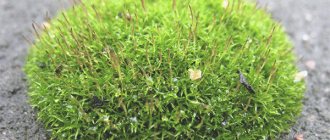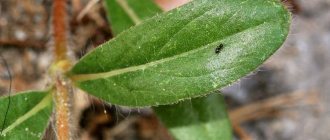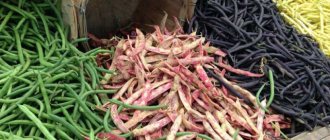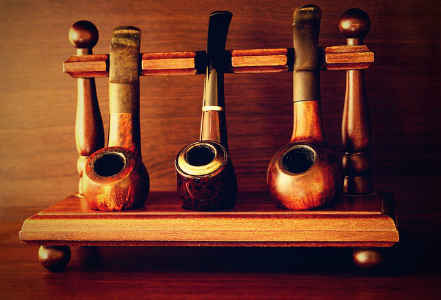
In our country, up to 75% of the male half of the population and about 21% of women smoke. A depressing statistician, you can’t say anything ... And this is against the background of active promotion of a healthy lifestyle and a gradual rise in the price of cigarettes. It is the latter fact that pushes many smokers to master the independent cultivation of smoking tobacco. But does it make any practical sense? It all depends on how much garden space and strength you are willing to spend on this activity, as well as on your desire to understand all the nuances of tobacco agricultural technology.
Description
How to grow tobacco in Russia? The described culture can be cultivated both in the garden and at home. Growing a shrub plant is not difficult. You just need to properly prepare and process the seeds and soil, as well as grow seedlings, which will then need to be planted on a plot or in a greenhouse. In leaving, tobacco is also not picky. The main thing is to water and feed the seedlings on time, as well as loosening the soil.
Below you can find the varieties of the tobacco plant, recommendations on how to grow and care for a shrub outdoors, and how to ferment the harvested crop.
Cultivation of smoking tobacco - is it worth it?
Let's say you are a smoker and live somewhere in the southern part of the country. You have several acres of land on which you would like to grow tobacco. In this case, you should start with simple calculations: one cigarette contains about 1 g of tobacco (the lower the quality, the less), which means that in a pack it is about 20 g. On average, a smoker needs one pack of cigarettes per day or from 6 to 8 kg of tobacco annually. If conditions are favorable, then one plant can produce up to 30 g of tobacco, while 6-7 copies can be planted on 1 m². If the variety is large-leaved, then the planting density should be 30x70 cm, and if we are talking about makhorka or plants with medium leaves, then 20x70 cm. It follows from this that in total it is necessary to plant from 270 to 300 plants, which will require about 40 m² ... Moreover, the tobacco itself in this case will be extremely strong, so it will have to be diluted with the stems. If this suits you, if you considered everything quite appropriate, or if you plan to sell products, then proceed according to the step-by-step instructions given in this article.


All parts of the plant contain nicotine
Note! All parts of plants contain nicotine - a powerful cardio and neurotoxin that leads to short-term euphoria (most of this substance is in the leaves - from 0.75% to 2.8%).
a brief description of
South and North America are considered the homeland of tobacco. In 1556, the culture was introduced to Europe by the French traveler André Theve. Previously, the plant was bred as a decoration for the site. However, since 1565 people began to try smoking the foliage.
Tobacco is a medium-sized shrub with a thick and sturdy stem. On the trunk there are large leaves with pointed edges. The roots can be up to 2 meters long. During the flowering period, a paniculate inflorescence is formed.
The tobacco culture is mainly bred for smoking. On an industrial scale, the plant is used for the production of cigarettes and cigarettes.
Leaves are the main value, as well as the crop harvested from tobacco bushes.
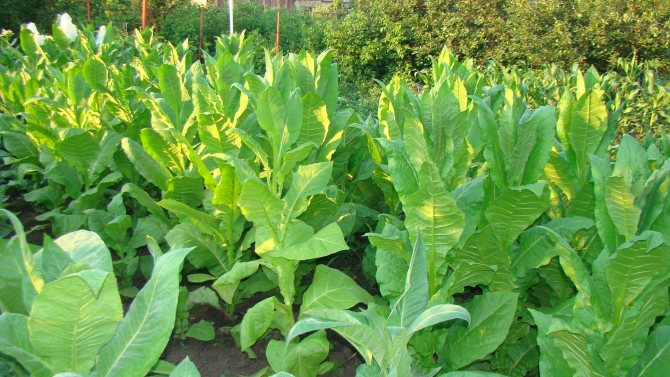

Industrial applications
The main purpose of makhorka in industrial conditions is growing for technical needs. So, a very strong alkaloid (nicotine) is produced from the leaves and stems of this plant, which is used to prepare both medicines and poisons. Malic and citric acids are isolated from phytomass - they are used in the textile (as a bleaching element for polyester fabric) and food industry (sweetener for soft drinks, ice cream and complex processed products such as mayonnaise or wine).
The seeds of this culture are a source of a very fatty oil, which is used for soap making, and is also added to the composition of some paints. Less commonly, shag is used in the tobacco industry - only about 5% of all tobacco products today consist of shag.
Plant varieties
Basically, only two types of tobacco culture are grown (there are 75 varieties in total) - makhorka and ordinary (also called fragrant and samosad), which can be used for hand-rolled cigarettes, put up for sale, and also used for hookah.
When choosing a variety, it is necessary first of all to build on the climate in which the plant will be bred.
In the middle lane, you can grow the following varieties of tobacco:
- Virginia. It has a rich aroma and high strength. Belongs to early maturing varieties. Tobacco is resistant to various climatic conditions and diseases. The leaves are high in carbohydrates.


- "Herzegovina flora". Has a rich smell and medium strength. The shrub can grow up to 1.5 meters in height. Harvesting lasts from July to October.
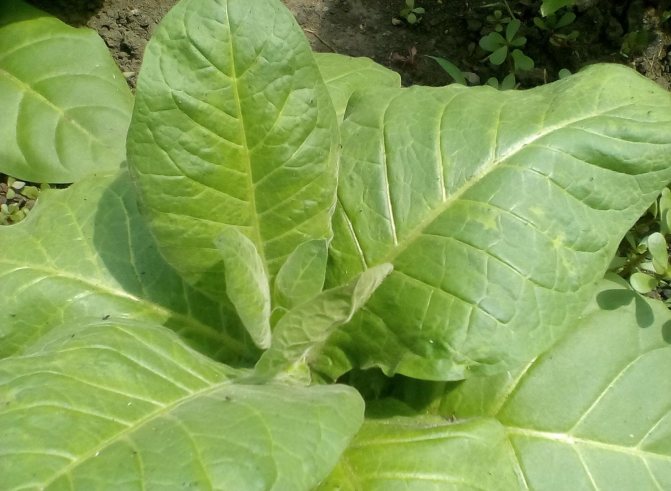

- "Holly". Matures within 120 days from the moment of planting in open ground. Unlike other varieties, it contains a small amount of nicotine.
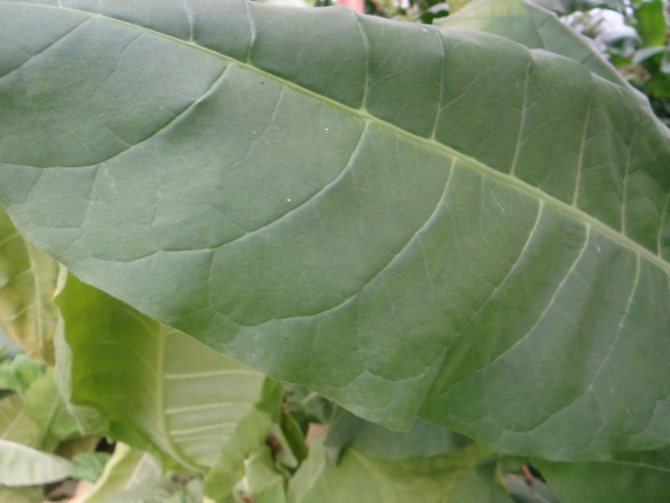

- "Sensation mix". Belongs to tall varieties. Reaches 1 meter in height. Opens in the evenings and in cloudy weather.
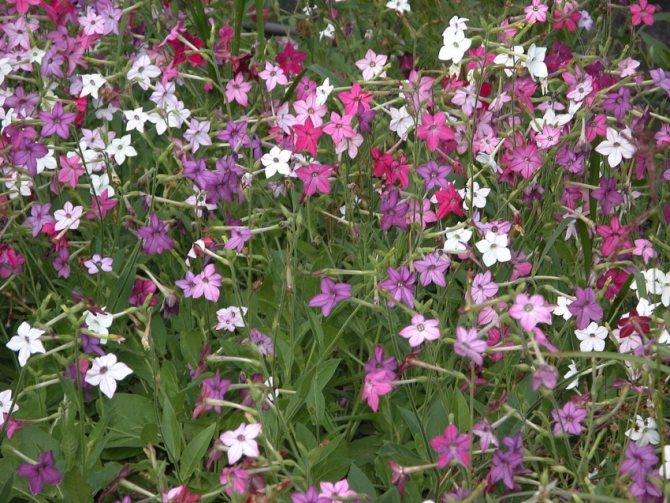

- "Trapezond". It is characterized by an early ripening rate. Harvesting can be done about 100 days after planting. Increased resistance to various diseases.
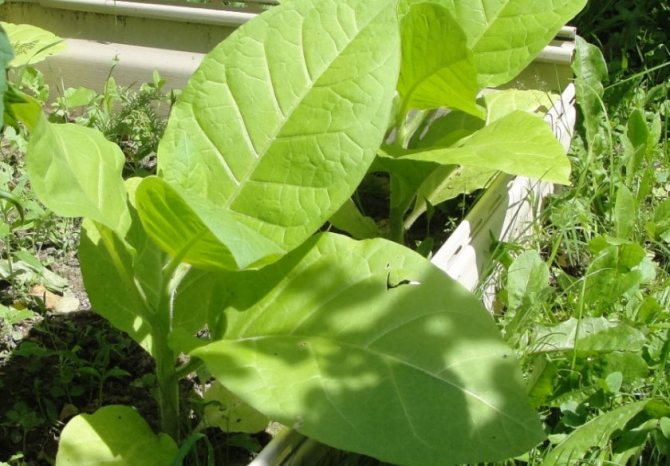

- "Anniversary". It is considered one of the earliest maturing tobacco varieties. The crop can be harvested after 80 days from the moment of planting.
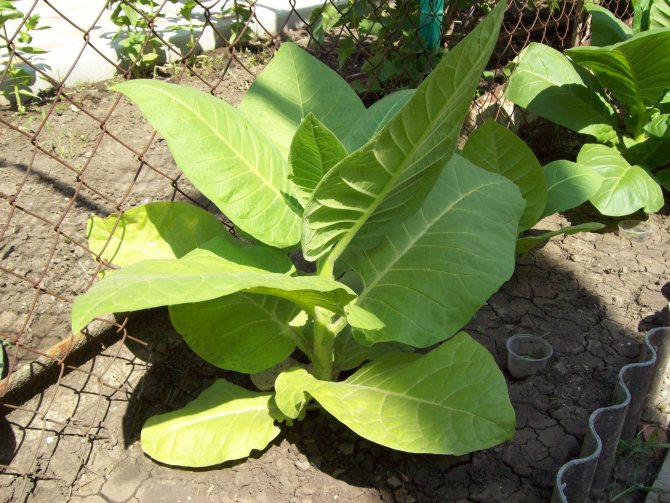

During the Soviet era, the tobacco plant was cultivated in the Krasnodar Territory, Crimea, Moldova, Kazakhstan, Uzbekistan and the Caucasus. Today tobacco is grown in most countries of the world. It is also possible to cultivate tobacco in Russia; this is not prohibited by law.
Harmful properties of shag
All the negative effects of makhorka on the body are again associated with nicotine: a small dose of this substance is a medicine, and a large dose is poison. Nicotine in large quantities leads to destructive work and significantly worsens, if not completely stops the work of the vital organs. Smoking makhorka or other tobacco, first of all, negatively affects the respiratory tract and lungs - tobacco smoke literally "burns" the delicate tissue of these organs.
In addition, tobacco is addictive, can reduce sexual potency, affect hair and skin color, and significantly overload the liver. However, the harmful effects of this plant are mainly associated with excessive consumption of it, so in order to benefit from tobacco, you need to know how, for what and in what quantity to use it.


Optimal planting time
To grow smoking tobacco yourself in the country, the seeds should be sown in containers either at the end of the winter period or at the beginning of the spring. For two months, the seedlings will grow at home (in an apartment or in a private house). Around April-May, seedlings can be transplanted into open land.
Until the moment of planting, the seedlings will get stronger and will have the following indicators:
- stem height - 16 centimeters;
- stem thickness - 0.5 centimeters;
- the presence of 4 leaves.
Seedlings can be planted in open ground only when the evening frosts are over.
When tobacco is harvested - samosad
Harvesting begins when the leaves acquire a slight yellowish tint. The lower leaves are broken out first - 3-4 from each plant. The second collection is increased to 3-5, the third - to 5-7 leaves. Then the number of harvested leaves begins to be reduced.
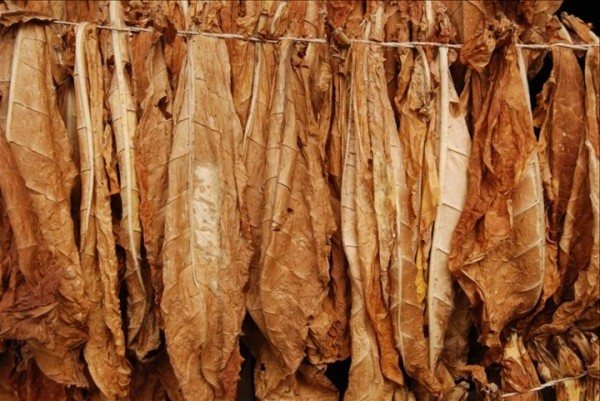

Drying of tobacco leaves.
The leaves are removed in the morning after the dew dries and in the evening. Before harvesting, the lowest (seedling) leaves are removed. Broken leaves are laid blade to blade, petiole to petiole. Then, using a large needle, the leaves are strung on the twine so that they do not stick to each other.
The first phase of leaf drying is carried out at a temperature of 25-35 degrees and an air humidity of 75-90 percent. After the leaves turn from green to yellow, they are dried in the sun.
How to grow tobacco?
To get a good harvest, you must strictly adhere to the technology of plant breeding. Planting tobacco for smoking in the garden is carried out in 4 stages, namely: selection of seeds, care of seedlings, soil preparation and planting in a substrate.
The culture can be bred as a seedling or non-seedling method. The latter option is not suitable for central Russia and the Moscow region due to the timing of landing in the ground at the dacha. This is due to the fact that it is very cold in early spring and the seeds will simply freeze in the ground. The seedless method is more suitable for cultivating shag.
Using the seedling method, the seeds should initially be sown on seedlings, and then transplanted to a summer cottage. For this, planting material is sown at home in a container at about the end of winter, and after germination of seeds, it is transplanted into open ground.
Seed selection
Most of the farmers who have many years of experience in growing tobacco harvest the seeds from the pods of last year's harvest. Beginners in this business purchase planting material in specialized stores. The main thing is that the seeds correspond to the selected plant variety.
To grow tobacco from seeds, they must be prepared in advance:
- The planting material must be dipped into a solution of tartaric (0.1–0.2 g / l) or succinic (1 g / l) acid for about a day, and 3 ml of the composition is required for 1 seed. The seeds should be kept in a warm room.
- After 3 days, the grains must be transferred to a moistened cloth and sent to a container for drying.
- Drying the seeds takes about 3 days. The temperature in the room should be +26 degrees. Planting material must be sprayed and mixed daily.
- When sprouts emerge from the grains, they should be dried.
After that, the seedlings can be planted in the substrate.
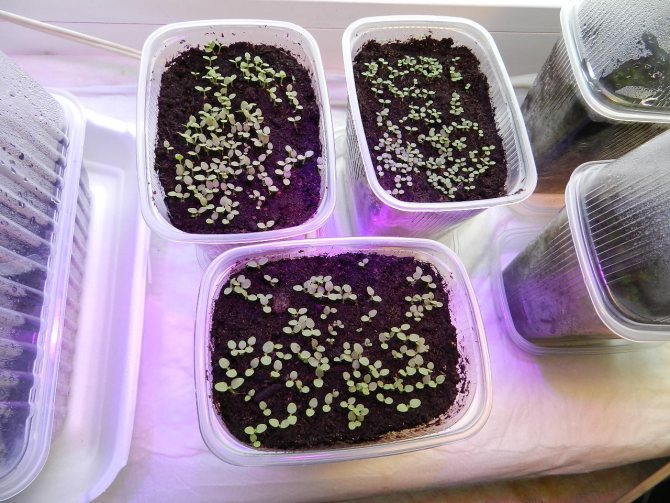

Seedling care
To plant sprouted seeds in the ground, you need to choose the optimal container in size. Since seedlings do not like diving, it is advisable to use separate containers. Most of the seedlings are grown in cassettes, pots or plastic cups.
Seedlings are best planted in a substrate consisting of sand and humus in a ratio of 1: 3, respectively.
How to properly plant and grow tobacco seedlings in a container at home:
- Spread the soil into separate containers.
- Mix the seeds with sand, and then put in the soil.
- Then the planting material must be sprinkled on top with a substrate.
- The land must be sprayed with water.
- Cover the containers with polyethylene.
- Next, the seedlings need to be placed on a windowsill, where the sun's rays do not fall.
Before the first three leaves are formed, the seedlings need the following care:
- spraying with water every day;
- temperature regime - +28 degrees;
- bright diffused light.
When the leaves appear, the conditions must be slightly changed:
- abundant hydration;
- constant feeding;
- air temperature - +20 degrees.


How can you feed tobacco seedlings:
- Mineral dressing. You will need to mix 3 g of ammonium nitrate with 2 g of potassium salt and 5 g of superphosphate in a liter of water.
- Organic compounds. In ten liters of water, you will need to stir a kilogram of chicken droppings. After that, the solution should be left for 1.5 weeks, stirring occasionally. Then the composition must be filtered and diluted with 5 liters of water.
Approximately 7 days before landing on the site, the conditions of care must be changed again. Now the number of watering needs to be reduced, and 3 days before planting, the moistening should be stopped altogether.
Soil preparation
Tobacco shrubs prefer loose and light soil. Pebbles with rubble can be used as drainage. The acidity of the soil should not exceed the 5.8 mark. The plant grows well on gray podzol, sierozem and podzolic soil.
It is also necessary to follow the rules of crop rotation. The tobacco crop can be planted in the places where it was previously grown:
- legumes;
- cereals;
- winter bread;
- sugar beet;
- perennial herbs.
It is undesirable to plant the plant where it used to grow:
- nightshade;
- sunflowers;
- tobacco (it is also undesirable to plant on last year's plantings).
Seedlings, which were grown in an apartment on a balcony or a windowsill, can be planted either in a garden in open ground or in a greenhouse. It all depends on the climate of the region in which the plant is bred. In warm regions (for example, in the Crimea), shrubs can be planted in open soil. For the northern regions (in Siberia and the Urals), greenhouse conditions are suitable.
Before planting seedlings on the site, the land should warm up to +10 degrees.
You should also prepare the soil. If the tobacco crop will be cultivated in a greenhouse, the soil should be fed with a mixture of sand and humus in a ratio of 4: 3, respectively. The thickness of the nutrient layer should be 10 centimeters. An open area must be fertilized with ash, mullein or manure.
Landing in open ground
In order to properly plant seedlings in open ground, certain manipulations must be performed:
- Make holes 50 centimeters apart.
- Pour 500 ml of water into each well.
- Plant the planting material in the pits.
- Dig in the seedlings with earth up to the base of the stem.
After planting the plants, the next step is to take proper care of the shrubs.
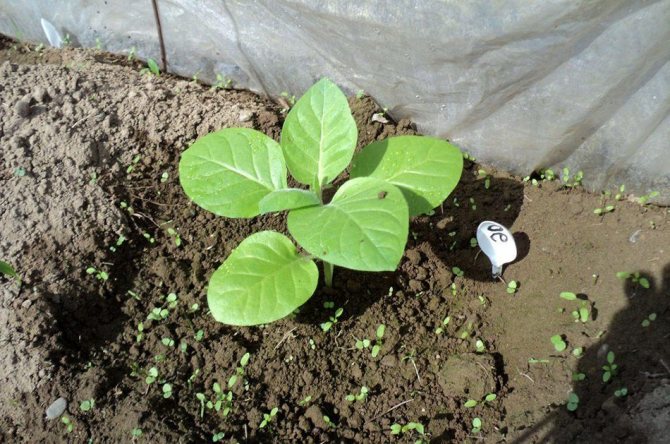

Fermentation of tobacco at home
Fermentation is the final process of tobacco processing, after which the tobacco is ready for consumption and long-term storage.
During fermentation, the biochemical composition of the tobacco leaf changes, and it parts with harmful substances, acquiring a bright aroma and taste, and becomes less strong.
Fermentation of tobacco at home is a painstaking process. Your tobacco should be completely dry, after which the dried leaves are placed in a bag or bag and moistened with a spray bottle. Leave the leaves in the bag overnight to moisturize. The moisture content of the leaves should be about 50%. Now your tobacco is ready for fermentation, which lasts, depending on the method, up to two weeks, and sometimes years.
Fermentation of tobacco in the sun
Moisten the leaves so that they are practically dry without breaking, and place them in a jar, covered with an iron lid. Take the cans out into the sun, place them on a metal surface that the sun will heat up. The banks will cool down overnight, but that's okay. Try tobacco after 10 days. As soon as its aroma seems sufficient to you, remove the tobacco leaves from the cans and dry thoroughly.
That's all, tobacco can be used. The sun also disinfects tobacco with ultraviolet rays, killing mold spores. You can ferment the tobacco in your car by placing it in the sun.
Fermentation of tobacco in the oven
You will need an oven and 3 liter jars with sealed lids. The tobacco leaves should be dry, but elastic, that is, they should not break.
Sprinkle the leaves from a spray bottle on both sides, if they are very dry, fold them in stacks, cover with foil and leave for a day. Then remove the midrib from each leaf, cut into 2mm strips and place in jars so that two thirds are filled (so that it is easy to mix). Screw the jars tightly with the lids and place them in the oven at 50 degrees for 5-7 days. Then take the tobacco out of the cans, dry it, and it's ready. Store it in an airtight container.
Fermentation of tobacco in a multicooker
Roll up the tobacco leaves tightly and place in a cloth bag. Set the temperature on the multicooker to 50 degrees and place the bags of tobacco there. During the day, you should change the lower and upper layers in places several times. After 2-3 hours you will feel the honey aroma, and after 3-4 days your tobacco can be consumed. Remember to cover the steam release valve with foil to prevent moisture from evaporating.
And finally:
- After fermentation, the leaves turn golden brown. A green leaf is a sign of marriage.
- After a few days, the leaves should give off a honey scent.
- There should be no condensation on the cans, and if it appears, immediately remove the leaves and dry.
- After fermentation, let the tobacco sit for another day for even more aromatic and strong tobacco.
Follow all the rules and your tobacco will be fragrant and tasty.
How to care?
Although tobacco for cigarettes after planting does not require special attention to itself, however, it is necessary to take care of it so that you can harvest a good, rich harvest.
Watering
When watering a tobacco plant, several conditions must be observed, namely: the frequency and time of hydration, as well as the temperature regime of the water.
It is advisable to irrigate in the morning or evening. If you moisten the plant at lunchtime, the rays of the sun can burn the leaves. Therefore, watering at lunchtime during the period of active sun exposure is not allowed.
The number of waterings depends on the age of the shrub:
- within a month after planting, seedlings must be moistened weekly;
- two-month-old shrubs need to be watered twice a week;
- plants older than 2 months and until the moment of collection should be moistened only when the soil begins to dry out.
Watering should be done only with warm water. Cool water can harm crops.
Top dressing
Top dressing of scented tobacco shrubs should be carried out according to the following scheme:
- four days after landing in open ground;
- three weeks after the first fertilization;
- 21 days after the second feeding.
You can fertilize plants with both mineral preparations and chicken droppings (for 10 liters of water, you will need 1 liter of organic fertilizer).
Loosening and weeding
It is necessary to loosen the soil in order to provide the soil with the necessary amount of oxygen. In addition, loosening has a positive effect on the development of the root system of the bush. The land needs to be weeded as needed. Together with loosening, it is necessary to get rid of weeds.
The substrate also needs to be raked closer to the base of the plant trunk, thereby hilling the crop. In the first month after planting, it is imperative to weed the ground.
4 weeks after planting, the impact on the plant must be reduced. You will still have to get rid of weeds, but only with your hands.
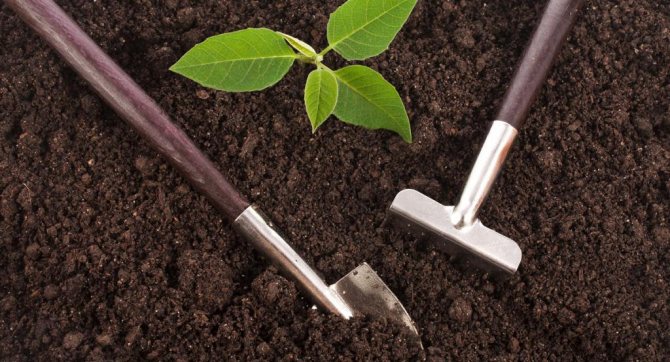

Disease and pest control
The tobacco crop can be protected from diseases and pest infestations if the conditions of cultivation and care of the plant are observed.
For prevention purposes, it is necessary to process seeds and soil before planting seedlings. In this case, a formalin solution is often used.
From fungal infections, tobacco can be affected:
- alternaria;
- powdery mildew;
- peronosporosis;
- black and dry root rot;
- black leg.
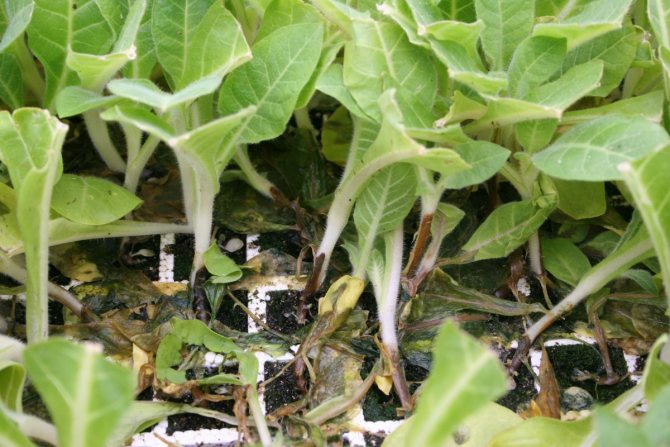

To cure the plant, such remedies as "Tsineba" and "Polycarbacin" are used.
Of viral infections, bushes affect:
- white motley;
- apical chlorosis;
- tobacco and cucumber mosaics.


There is no cure for viral diseases, so the affected shrubs must be uprooted and burned.
In addition to diseases, insects can attack the culture:
- wireworm (Metaphos or Hexachloran is used against it);
- tobacco thrips (they are removed by the drug Fitoverm);
- aphids (Rogor-S will help to get rid of).


Instructions for the dilution of the formulations are given directly on the packaging of the drug. Gloves must be worn during handling.
Planting instructions and care
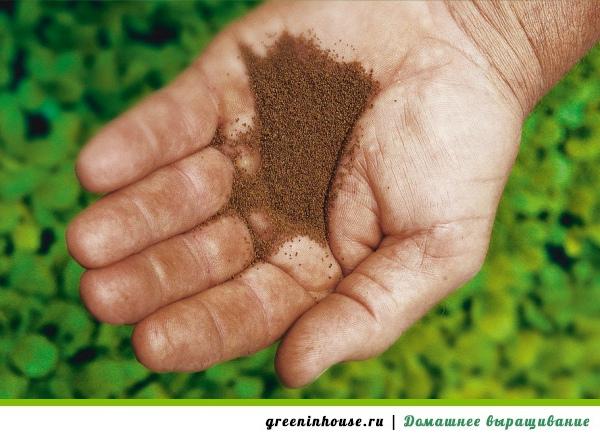

Tobacco seeds remain viable for a long time, and therefore old seeds can also be used for planting. They will rise as quickly as fresh. If the seeds are planted for seedlings to be planted later in the garden, then the age of the plants should be 40-45 days.
The planting principle, regardless of the future location of the plants and the planting site, is identical: the seeds are scattered over the soil, the soil is preliminarily watered. The maximum seed placement depth should not be more than 8mm. They are slightly pressed into the soil, and lightly watered so that the soil does not erode, and the seeds do not sink into the soil.
It is better to germinate tobacco on a damp cloth beforehand so that the seeds have germinated sprouts. So, if you plan to get seedlings, you can get it faster by 7-8 days. For planting and good shoots, you need a temperature above 25 degrees. When tobacco grows, the gardener needs to loosen it often, weed, water and fertilize as needed.
In order to calculate the amount of fertilizer, you can focus on the amount of fertilizer for one tomato bush.
Tobacco is watered infrequently, even on hot days it is enough to water it 3 times a summer, but at the same time watering should be abundant. Better to let the plant suffer a lack of water than overflows. Their root system is powerful and the plant can take moisture from the soil for a long time. But before you pluck it and ferment it, the tobacco is well watered with settled warm water.
Harvesting and storage
During the flowering period of tobacco shrubs, you need to prepare for collecting seeds that are hidden in the fruit box. The latter should be cut off during the ripening period and left to dry for about 14 days. After the specified time, the seeds can be removed.
You can harvest tobacco leaves when they turn yellow. First, harvesting is carried out from the bottom row, and then from the top. After transplanting the seedlings to the site, it takes 1.5 months for the shrubs to ripen. Therefore, the collection of leaves begins somewhere in the end of June.
After all the leaves are collected, they must be dried and then processed.
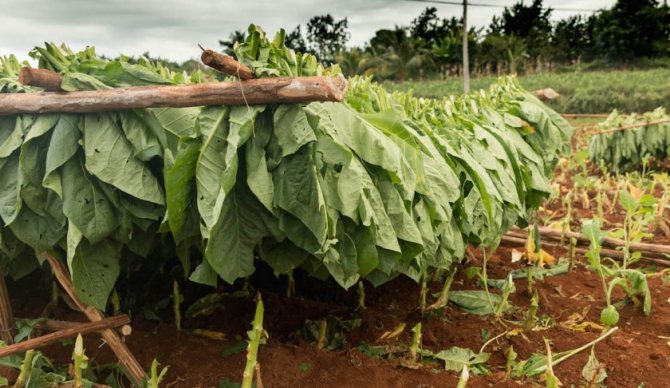

Outcomes
Growing tobacco is easy, but there are a few things to be aware of. The plant requires regular watering and loosening of the earth, it also needs feeding and weed removal. It is best to feed the tobacco about three times per season. The first top dressing should be in a couple of days, after it was planted in the ground, the next top dressing is done in a month, and a third after another month.
Fertilize tobacco with a mixture of chicken droppings or mineral solution. To make the tobacco better, its bushes need to be edged; for this, one half of the flower arrows should be removed. After verchkovaniya new stepsons will begin to appear, from which you also need to get rid of.
Village self-garden
For tobacco (Nicotiana rustica), the fame of rustic tobacco is firmly entrenched precisely due to the increased unpretentiousness of this representative of the Solanaceae family. Shag is grown not only through seedlings, but also by direct sowing. The area of growth from southern latitudes to the Arctic.
In Ukraine and in the South of Russia, makhorka is sown from the second half of April to early May in shallow furrows, sprinkling with humus up to 1 cm. In regions with a more severe climate, sowing is carried out from the third decade of May to early June.
Smoked samosad in Russia since time immemorial and grown on an industrial scale. Due to the high content of nicotine in the leaves, shag is removed and dried with a whole bush, all aerial parts of the plant are used to prepare smoking powder. When ripe, from one bush, you can get up to 30 grams of seed material and provide them with a solid supply not only for yourself, but also for your neighbors.
In the Middle Lane, it is recommended to grow tobacco seedlings at home or sowing under a film shelter. Germination of seeds begins at a temperature of at least + 7-8 ° C, and active growth at + 20 ° C. The care consists in thinning the plantings, loosening the soil, removing weeds and edging (removing flowers and buds).
Interesting cultivation varieties
Yellow (numbers 106 and 109) - undersized (70-80 cm) early ripening varieties with light green leaves. From sowing to ripening, 80 days pass. For seedling, which is preferred, 40 days. Average yield - up to 40 grams of the final product in a dry state.
Mopacho is an annual plant with large, fleshy leaves and stems. Up to 1-1.2 meters high. Differs in vitality and very high, in comparison with other varieties, nicotine content (exceeds 15-20 times).
Green 317 is a tall, mid-season variety. Resistant to bacterial hazel disease. Unpretentious in cultivation. Needs feeding with mineral and organic fertilizers. From planting to technical ripeness 80-85 days.
Pekhlets (varieties) - has a high yield. Green leaves are small or medium, up to 12-18 pieces per plant. From planting to harvesting 70-80 days. Disease resistance is high.
The popularity of this culture is so great that almost every region can boast of its own local variety of makhorka: Yeletskaya, Crimean, Samara, Moscow, etc.
Growing tobacco in the country. When to harvest and how to dry it?
Growing tobacco is not as critical a process as harvesting and drying it. The result directly depends on the correctness of these actions. Improper drying or fermentation can negate all efforts to grow tobacco for smoking.
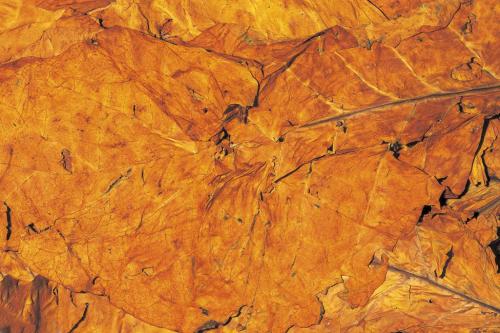

Tobacco drying is a critical step in the tobacco growing process
You should remove tobacco that has changed the color of the leaves. If at first, at the stage of maturation and growth, they are green, then ready for harvesting are closer to yellow. If there are leaves of different colors on one bush, then they should be collected as soon as they are ready. Hence, the harvesting process is sometimes delayed for a long time.
Tobacco drying takes place in several stages:
- Hanging leaves. After harvesting, the leaves are hung in a room that must be ventilated and sufficiently humid. This is necessary so as not to dry out the leaves.
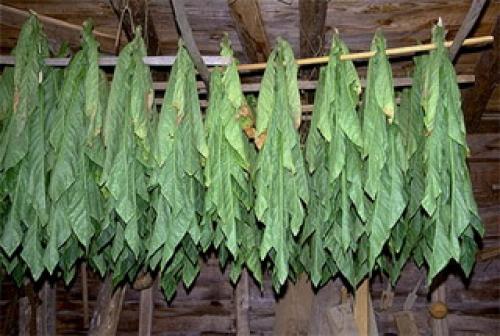

Hanging tobacco leaves
- Drying directly. It will take about a month for the tobacco to dry to the desired limit. During this period of time, it remains only to wait and monitor the maintenance of conditions in the room.
- Preparation for fermentation. Sufficiently dried leaves are evenly moistened by spraying water on them. They should soften a little. After that, they are stacked on top of each other and covered with foil.
- Fermentation. Prepared leaves are placed in jars or other containers. This is necessary to regulate the strength of the tobacco and change its taste.
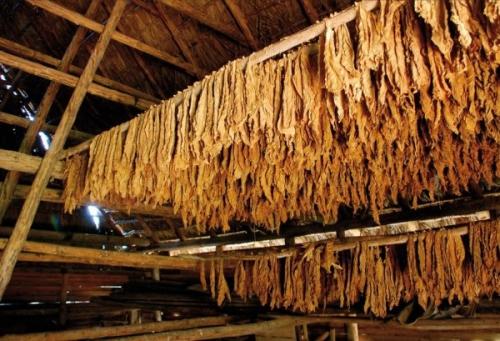

Tobacco soil and fertilizer
The plant is planted in sandy loam soil with an abundance of potassium and nitrogen. It quickly pumps out all the nutrients from the soil. Therefore, scented tobacco must be fertilized often, doing it with mullein or bird droppings. If necessary, the soil is limed.
The optimal substrate for growing tobacco is soil with humus, garden soil and sand. They are mixed in a ratio of 2 to 1 to 1. Additionally, before planting seeds, the soil must be well watered.
They begin to feed the plant after planting on seedlings with the help of a slurry of manure and superphosphate. It can be processed using sulfur powder.
When the first inflorescences appear, the plant is treated with a solution of onion peels or garlic tincture. A week after the first treatment, the bushes are once again treated with onion-based tincture. The third feeding takes place after another 7 days.

